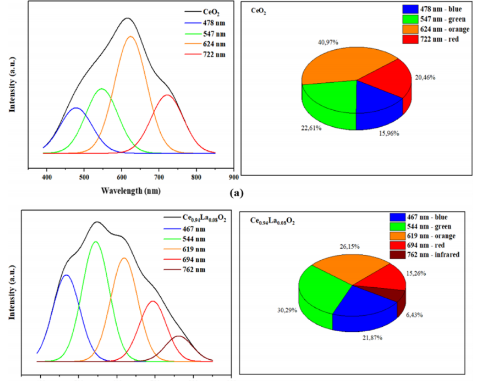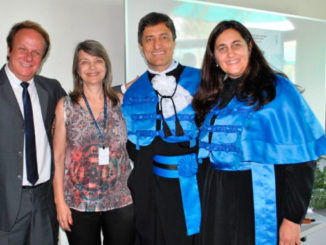
Novel Approaches of Nanoceria with Magnetic, Photoluminescent, and Gas-Sensing Properties
Abstract: The modification of CeO2 with rare-earth elements opens up a wide range of applications as biomedical devices using infrared emission as well as magnetic and gas-sensing devices, once the structural, morphological, photoluminescent, magnetic, electric, and gas-sensing properties of these systems are strongly correlated to quantum electronic transitions between rare-earth f-states among defective species. Quantitative phase analysis revealed that the nanopowders are free from secondary phases and crystallize in the fluorite-type cubic structure. Magnetic coercive field measurements on the powders indicate that the substitution of cerium with lanthanum (8 wt %), in a fluorite-type cubic structure, created oxygen vacancies and led to a decrease in the fraction of Ce species in the 3+ state, resulting in a stronger room-temperature ferromagnetic response along with high coercivity (160 Oe). In addition to the magnetic and photoluminescent behavior, a fast response time (5.5 s) was observed after CO exposure, indicating that the defective structure of ceria-based materials corresponds to the key of success in terms of applications using photoluminescent, magnetic, or electrical behaviors.
Author(s): Rocha, LSR; Amoresi, RAC; Moreno, H; Ramirez, MA; Ponce, MA;
Foschini, CR; Longo, E; , Simões, AZ
ACS Omega
Published: June 15, 2020
DOI: 10.1021/acsomega.9b04250




